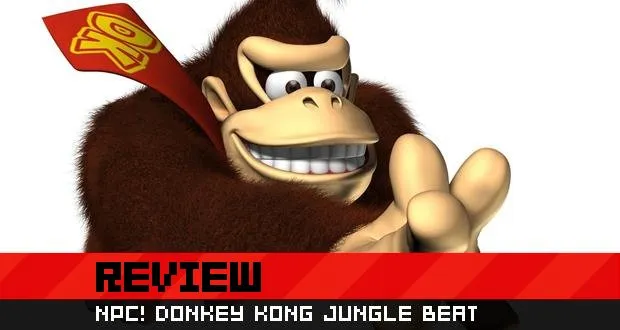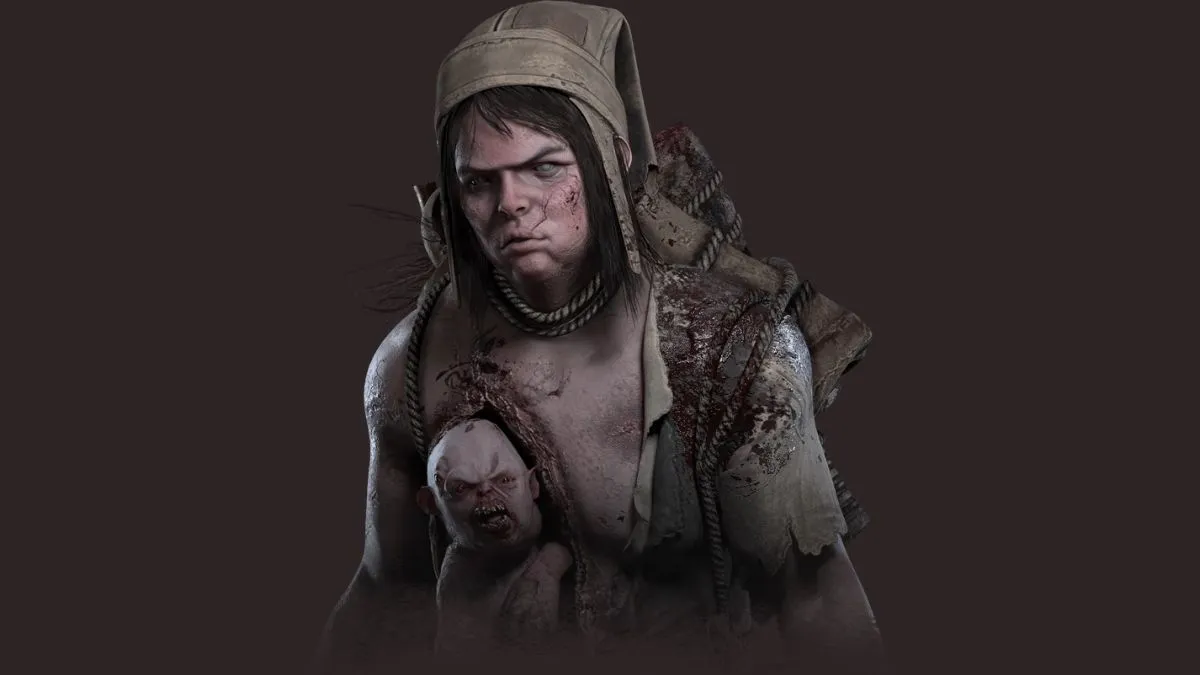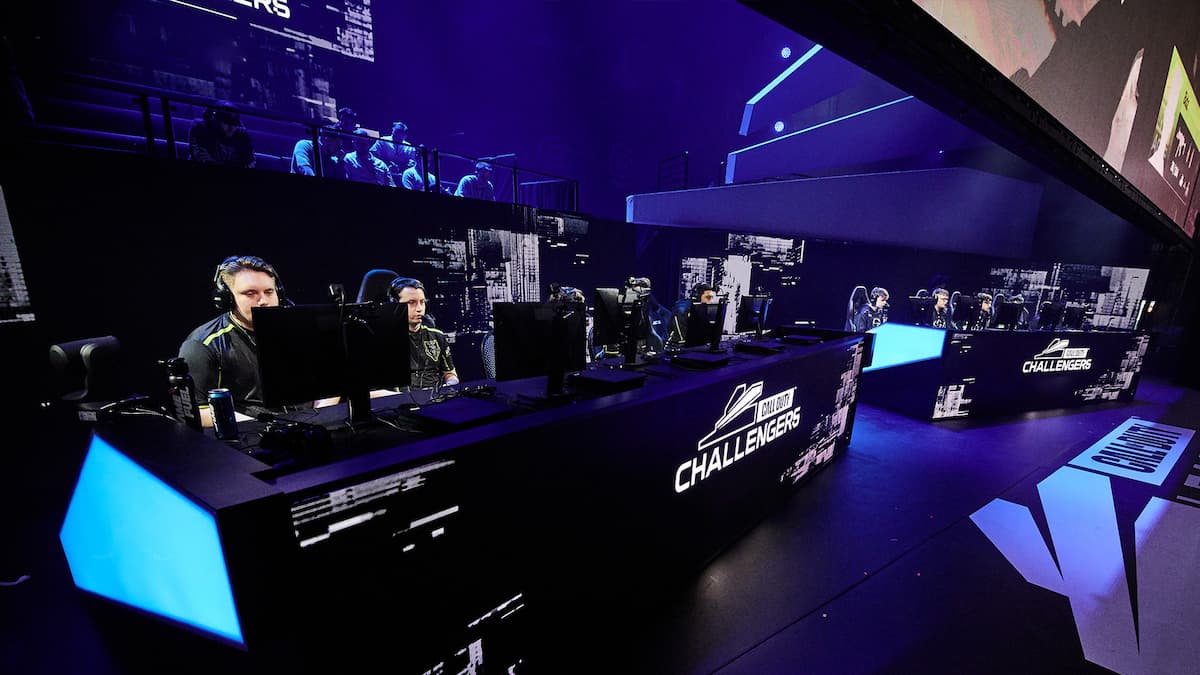New Play Control! Donkey Kong Jungle Beat is the first Wii port that actually has less in the way of motion controls than its source material. Whereas the GameCube iteration of Donkey Kong Jungle Beat required nearly constant hand clapping and bongo slapping, this new Wii-specific version plays a lot like a traditional 2D platformer. Other than the occasional flick of the wrist, the game is played entirely with buttons and the analog stick. Multiple changes had to be made to game’s design to make it playable with a conventional control scheme, to the point where this really is a completely difference experience.
Is this a Wii game that’s actually better for its lack of motion controls? Hit the jump to hear the answer, from me and Ashley Davis.
New Play Control! Donkey Kong Jungle Beat (Wii)
Developer: Nintendo
Publisher: Nintendo
Released: May 4, 2009
MSRP: $29.99
Put bluntly, New Play Control! Donkey Kong Jungle Beat is more fun than the GameCube original. It’s not as “special” without the gimmicky controls, but it’s a lot more challenging, has more depth, and has more responsive controls, all of which leads to a more compelling game.
Let’s start with the controls. The original game requires use of the GameCube bongo controller. Hitting one side of the bongos sends Donkey Kong lumbering in that direction, hitting both bongos together makes him jump, and clapping into the controller’s mic makes him clap. This clap sends out a shock wave that surrounds Donkey Kong, filling nearly 1/4 of the screen with destructive power. This clap can kill enemies, grab bananas en masse, make flowers grow, and grapple enemies — pretty much everything that needs doing in the game. It’s actually one of the most over-powered moves in videogames ever. You can basically beat any level in the original DK JB by slapping the bongo in the direction you need to run, jumping occasionally, and clapping like mad until everything that could possibly stand in your way is dead. The game’s levels are unquestionably well designed, which does a lot to make up for how easy it is to plow through them, but it still must be said that from beginning to end, the original game just doesn’t take a hell of a lot of skill or precision to play.

NPC! DK JB changes that by putting the player in command of a severely weakened, truly controllable Donkey Kong. In this Wii port, the hand clap is now performed with a quick shake of the Wii remote. Its shock wave now only goes 1/16 of the screen in distance, and it only shoots out in one of eight specific directions. You have to aim with the analog stick in order to get DK to clap where you need him to, which takes a lot more skill than just clapping your ass off as the screen is 1/4 filled with destructive sound waves. You can still grab bananas en masse, but not by clapping. In this remake, that maneuver can only be performed in mid-air, by pressing the jump button a second time. Just like in the original, grabbing bananas in bunches increases a combo multiplier, which is necessary to max out your banana count (more on that later). The difference is that mapping the mass banana grab to the jump button goes a long way towards making the hand clap less spammable, and in turn, making the game more skill-based.
Another huge banana-related change is the game’s health/life system. In the original game, getting hit caused you to lose five bananas, which is nothing, considering it’s not uncommon to collect 400-600 bananas per level. In NPC! DK JB, your health isn’t tied to your banana count. You have three hearts, and that’s it. Three hits and you’re dead. This harsher penalty is balanced by the fact that DK can now amass extra lives and hit mid-level checkpoints, where in the original, one death forced you to start the level over from scratch. It made sense for the original DK JB to be less punishing, and for enemies to be extremely easy to kill (via the aforementioned screen-filling hand clap) because you had to play the game with goddamn bongos. It was a huge handicap that needed to be catered to. That said, giving the player greater control over DK and upping the difficulty in tandem goes a long way toward making the game more responsive and exciting.

To make NPC! DK JB work with the control/health bar systems, even more changes needed to be made. Nintendo made multiple adjustments to the item/banana/enemy layouts of each level. Now that you can actually control DK with precision, the game can throw tons of enemies/obstacles at you at once without making things unfair. Levels that were totally enemy-free in the original game are now filled with familiar enemies like bats and pigs, or all-new obstacles like the invincible electric sparks from Donkey Kong Junior, Thwomp-esque falling blocks, and the destructible logs and cacti.
There are also a few cool cosmetic changes. Textures are generally brighter with more contrast, and a few enemies have been totally created. A more crowd-pleasing addition is the replacement of “launching plants” from the GameCube original with the more familiar Donkey Kong Country barrel cannons. It’s a minor touch, but goes a long way to communicate what this game is really about: making DK JB more appealing to fans of Donkey Kong’s classic SNES series of platformers.

Personally, I never cared for the Donkey Kong Country games. They were generally too easy, too simple, and too straightforward to get excited about. While NPC! DK JB is perhaps still a smidge too easy, it definitely isn’t too simple or generic. From a scenario design perspective, the game is extremely unpredictable. One moment you’ll be doing the expected, like swinging from vine to vine in the jungle, while the next moment, you’ll be swimming through giant cubes of levitating, multi-colored gelatin, or getting swallowed by a giant stone dragon head, only to be farted out of the face of another stone dragon. It’s extremely weird stuff, and extremely fun stuff.
Enemies also vary greatly in type, ranging from the mundane (giant mice, electric jellyfish) to the totally bizarre (sleeping chicken-headed cactus monsters, screen-filling iguana-caterpillars, fang-faced ballerina teddy bears, demon-vomiting lava fish). DK JB was designed by the same team that created Super Mario Galaxy, and it shows. There is a level of imagination and surrealism here that just wasn’t present in the DKC games, or most modern games, period.

Simplicity is also far from being an issue here. Levels are large and complex, and are generally filled with tons of secret areas rife with potential for high-level mastery. The “main game” consists of twelve levels and a final boss area. The game calls these levels “kingdoms,” and splits them into three parts (two platforming sections and a boss fight). To play through them all as quickly and sloppily as possible would take the average person about three hours, but to beat each kingdom with 1,000 bananas each (necessary to unlock the game’s four bonus kingdoms and extra last boss battle) will take a lot longer — probably five to seven additional hours. To get those bananas, you’ll need to fully explore each level to find the hidden banana hordes therein, and master the each level’s specific mid-air banana grab combos as well, requiring precise timing and skills that will only come with practice (and multiple play-throughs).
In a lesser game, being forced to replay levels multiple times might feel like a chore, but in NPC! DK JB, it’s a pleasure. The game looks and sounds incredible. Charming, sometimes laughter-inducing sound effects lurk around every corner (with the heli-bird’s cry being particularly awesome). More importantly, the game looks extremely polished. The game joins Resident Evil 4: Wii Edition as more evidence that most developers (including Nintendo) tried harder to create impressive graphics on the GameCube than they do on the Wii.

My only real issue with the game relates to its boss battles. They serve as a great change of pace, and offer a style of play not present in the rest of the game, but they are just way too easy. During boss fights, the game reverts back to the banana-based health meter from the original DK JB. This makes it almost impossible to be killed by a boss (with the exception being the last boss, who may kill you once or twice). If you think of the boss fights as simple bonus levels — something there to provide some variety and not necessarily challenge — the wimpy bosses feel a little less disappointing. Still, it must be noted that dying several times on the way to a boss, then beating said boss without taking a hit, feels more than a little anti-climactic.
I’ve owned the original DK JB for years, but I never bothered to finish it. I wanted to love the game, and I certainly got a lot out of it … for about an hour. After that, the game’s initially fresh and interesting bongo controls got tiresome and repetitive. Worse, the game’s non-existent difficulty kept me from ever feeling challenged or otherwise compelled to see it through. NPC! DK JB fixes both of those problems, while retaining the original’s synthesis of 2D platforming and rhythm-based action. There are things that Nintendo could have included here to make the game perfect (more levels, two-player co-op, more challenging bosses, option for old-school bongo play), but for a $30 remake, it’s hard to complain about this package.
Score: 8.5 –– Great (8s are impressive efforts with a few noticeable problems holding them back. Won’t astound everyone, but is worth your time and cash.)
Ashley Davis
As Mr. Holmes states above, it is quite interesting that the Wiimake of Donkey Kong Jungle Beat has much less of a motion-centric control scheme than the original. However, I must respectfully disagree that the new controls make for a better game. While they do serve to help make this wonderful last-gen game accessible to a bigger audience, in doing so, I feel they also make the main game much less of a challenge. Now that you can move Donkey Kong with the precision of a stick and button, no amount of the new stuff that they try to throw at you can make the game any harder. They only tend to make things more annoying, especially now that your clap attack only goes out in one direction, instead of all around you.

I also had experiences opposite Jon’s in regards to the game’s enemies and bosses. It may just be that I’m horrible at the game with the new controls, but some of them seem to be a bit harder to defeat now, and not in a good way. The controls feel imprecise at critical times, and sometimes may not register in-game the way you want them to. For example, when I would get an enemy down and would have to punch them as many times as possible to make the time count, the Wiimote often stopped registering my punches as I got faster. It’s only another annoyance at the most, but one that I couldn’t overlook as a fan of the original bongo control scheme, which always made these maneuvers feel flawless. This is not the fault of the game, but an inherent flaw of the Wiimote.
All things considered, NPC! DK JB is not all bad. Actually, it’s quite good. The greatness of the original title shines through all of the little tweaks made to the formula to make it more friendly to a more traditional control scheme. Some of the old levels feel completely new now with all the extras that are added. The visuals aren’t changed much, but seeing as how the original game was one of the most beautiful GameCube titles in existence, that’s not a complaint. You may get frustrated with using the Wiimote, but you will still have fun exploring the odd worlds that DK finds himself in in this title.

I personally feel that the game is better when tied down to its original gimmick. Even so, I can still give NPC! DK JB its merits because having the bongo control scheme taken away makes it almost an entirely different experience altogether. When stood on its own, NPC! DK JB is great, and one of the best platformers for the Wii I’ve yet played. If you missed out on it the first time around or hated the bongo controls, I implore you to go out and pick it up so that you can experience this strange and wonderful game.
Score: 8 — Great (8s are impressive efforts with a few noticeable problems holding them back. Won’t astound everyone, but is worth your time and cash.)




